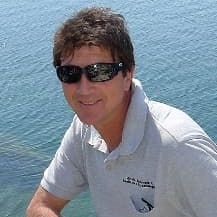Sea Level Rise and Related Hazards Assessment
A special issue of Journal of Marine Science and Engineering (ISSN 2077-1312). This special issue belongs to the section "Coastal Engineering".
Deadline for manuscript submissions: closed (20 March 2024) | Viewed by 4639
Special Issue Editors
Interests: geodesy; geophysics; sea level; geosciences
Special Issues, Collections and Topics in MDPI journals
Interests: near-earth electromagnetic environment (magnetosphere, ionosphere); extreme events in climate; sea level rise; turbulence in fluids and plasmas; theory of complex systems and chaos
Special Issues, Collections and Topics in MDPI journals
Special Issue Information
Dear Colleagues,
The global mean sea level is rising at a rate of about 4 mm per year and it is expected to rise by more than one meter by the end of this century, representing a hazard factor for many populations living in coastal plains and low-lying islands. Maritime cities, coastal infrastructures, heritage sites and natural areas are at risk of inundation in the next decades under the effects of the global warming. In addition, natural or human-induced land subsidence can locally accelerate the effects of sea level rise along specific continental and insular coasts, thus exacerbating land flooding.
Data produced during observations from space, the air and the ground provide high-accuracy data sets that support the realization of relative sea level rise projections and detailed flooding scenarios when in combination with climatic projections and high-resolution digital elevation models of the coastal zone.
Furthermore, new technological advances in data acquisition and the production of very high-resolution and high-accuracy data are very powerful tools for studying the effects of sea level rise and extreme events in coastal zones.
This Special Issue of The Journal of Marine Science and Engineering aims to summarize new insights and benefits that derive from the use of multiple data, focusing on global and relative sea level rise and its impacts along the coasts. Advancements in the methodologies, techniques and data processing are primarily expected in the following areas:
- Sea level trends from space observations and tide gauge data;
- Land uplift and subsidence detected from geodetic networks and InSAR data, to identify coastal zones more prone to accelerated sea level rise;
- Impact of extreme marine events (storm surges and tsunamis) and flooding extents in coastal areas in sea level rise conditions;
- Generation of very high-resolution and accuracy DEMs in coastal areas for flooding scenarios applications;
- Impacts of sea level rise on coastal cities, infrastructures (e.g., harbors, tourism, etc.), agriculture, coastal erosion, heritage sites and natural areas;
- Natural based and conventional coastal protection solutions to mitigate sea level rise in specific zones;
- Any other application to sea surface dynamics and coastal studies.
Dr. Marco Anzidei
Dr. Tommaso Alberti
Guest Editors
Manuscript Submission Information
Manuscripts should be submitted online at www.mdpi.com by registering and logging in to this website. Once you are registered, click here to go to the submission form. Manuscripts can be submitted until the deadline. All submissions that pass pre-check are peer-reviewed. Accepted papers will be published continuously in the journal (as soon as accepted) and will be listed together on the special issue website. Research articles, review articles as well as short communications are invited. For planned papers, a title and short abstract (about 100 words) can be sent to the Editorial Office for announcement on this website.
Submitted manuscripts should not have been published previously, nor be under consideration for publication elsewhere (except conference proceedings papers). All manuscripts are thoroughly refereed through a single-blind peer-review process. A guide for authors and other relevant information for submission of manuscripts is available on the Instructions for Authors page. Journal of Marine Science and Engineering is an international peer-reviewed open access monthly journal published by MDPI.
Please visit the Instructions for Authors page before submitting a manuscript. The Article Processing Charge (APC) for publication in this open access journal is 2600 CHF (Swiss Francs). Submitted papers should be well formatted and use good English. Authors may use MDPI's English editing service prior to publication or during author revisions.
Keywords
- sea level rise
- vertical land movements
- coastal flooding
- extreme events
- coastal erosion
- coastal adaptation
- coastal protection
- coastline position
- digital elevation models






